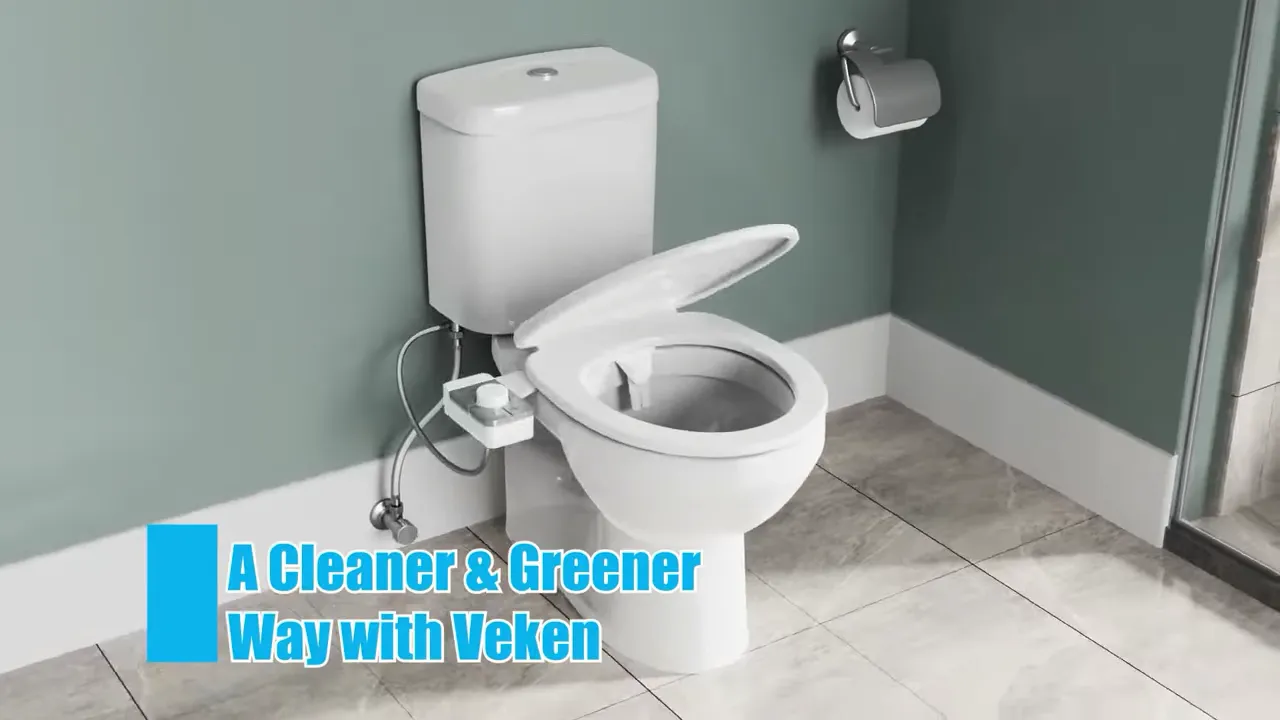To install a bidet without an outlet, use a bidet attachment that connects to the water supply valve. This attachment can be easily installed with basic plumbing tools.
Bidets have gained popularity as a hygiene solution in many households. If you’re considering installing a bidet but don’t have an electrical outlet nearby, there’s a simple solution. By using a bidet attachment, you can enjoy the benefits of a bidet without the need for an outlet.
These attachments connect directly to the water supply valve, making installation a breeze. With just a few basic plumbing tools, you can have a bidet installed in no time. We will guide you through the process of installing a bidet without requiring an outlet.
Benefits Of Installing A Bidet Without An Outlet
Installing a bidet without an outlet offers numerous benefits that make it an attractive option for both practicality and environmental reasons. In this section, we will explore three key advantages of choosing a bidet without an outlet: saving on electricity costs, avoiding the need for complicated wiring, and opting for an environmentally friendly solution.
Save on Electricity Costs
One of the primary benefits of installing a bidet without an outlet is the potential to save on electricity costs. Traditional bidet models require electricity to power their features, such as temperature control and water pressure adjustments. However, bidets without outlets operate manually or utilize alternative energy sources, eliminating the need for electricity consumption.
By eliminating the reliance on electricity, you can potentially reduce your utility bills and achieve long-term savings. This makes a bidet without an outlet a cost-effective choice for those looking to reduce their household expenses without compromising on the comfort and hygiene benefits provided by a bidet.
No Need for Complicated Wiring
Another advantage of installing a bidet without an outlet is the absence of complicated wiring requirements. Traditional bidets with electrical features often necessitate professional installation to ensure safe and proper wiring connections. This installation process can be time-consuming and may require additional expenses.
On the contrary, bidets without outlets operate independently, without the need for complicated electrical connections. This means that you can easily install a bidet without an outlet yourself, saving both time and money. The installation process is simplified, typically involving connecting the bidet to your existing plumbing setup without the need for any complex electrical wiring.
Environmentally Friendly Option
Choosing a bidet without an outlet is not only a practical choice but also an environmentally friendly one. By eliminating the reliance on electricity, bidets without outlets significantly reduce energy consumption. This reduction in energy usage helps decrease your carbon footprint, contributing to a more sustainable future.
Additionally, bidets without outlets often require minimal water usage compared to traditional bidet models. Some innovative designs feature water-saving technologies that ensure efficient water flow, conserving this precious resource without compromising on cleansing effectiveness.
By opting for a bidet without an outlet, you can contribute to environmental preservation while enjoying the wide range of benefits this innovative bathroom fixture offers.
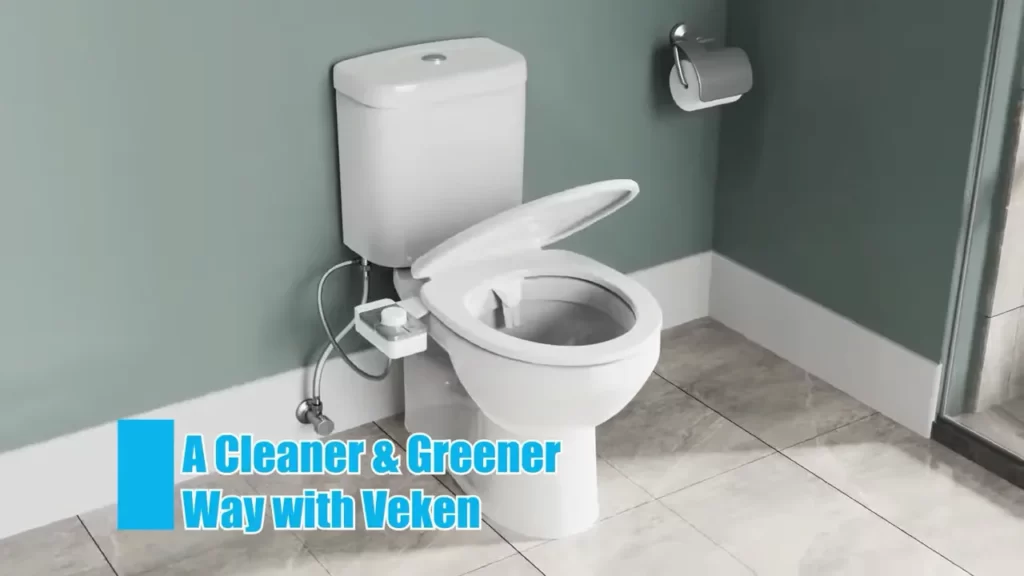
Tools And Materials You’Ll Need
When installing a bidet without an outlet, there are a few essential tools and materials that you’ll need to have on hand. By gathering these items beforehand, you’ll be well-prepared to tackle the installation process and enjoy the benefits of a bidet in your bathroom. Below is a list of the tools and materials you’ll need:
Adjustable wrench
An adjustable wrench is a versatile tool that allows you to easily tighten and loosen nuts and bolts. It is an essential tool for connecting the bidet attachment to your toilet’s water supply.
Pliers
Pliers come in various sizes and types, but a pair of locking pliers or slip-joint pliers are recommended for this installation. These tools will come in handy when tightening or loosening different components of the bidet attachment.
Teflon tape
Also known as plumber’s tape, Teflon tape is an important material that helps create a watertight seal. It is applied to the threaded ends of pipes and fittings to prevent leaks. Make sure to have some Teflon tape on hand to ensure a secure connection between the bidet attachment and your toilet’s water supply.
Bidet attachment kit
A bidet attachment kit contains all the necessary components for attaching the bidet to your toilet. It typically includes a bidet sprayer, a hose, a T-valve for water connection, and other accessories. Make sure to choose a kit that is compatible with your toilet and meets your preferences.
Hack saw
A hack saw is a small, handheld saw with a fine-toothed blade. It is useful for cutting through pipes or other materials, if needed, during the installation process. Having a hack saw nearby is a good idea in case any adjustments or modifications are required.
Now that you have an overview of the essential tools and materials, you can proceed with confidence to install your bidet without an outlet. Remember to follow the manufacturer’s instructions and take your time to ensure a successful installation. In the next section, we will guide you through the step-by-step installation process, so stay tuned!
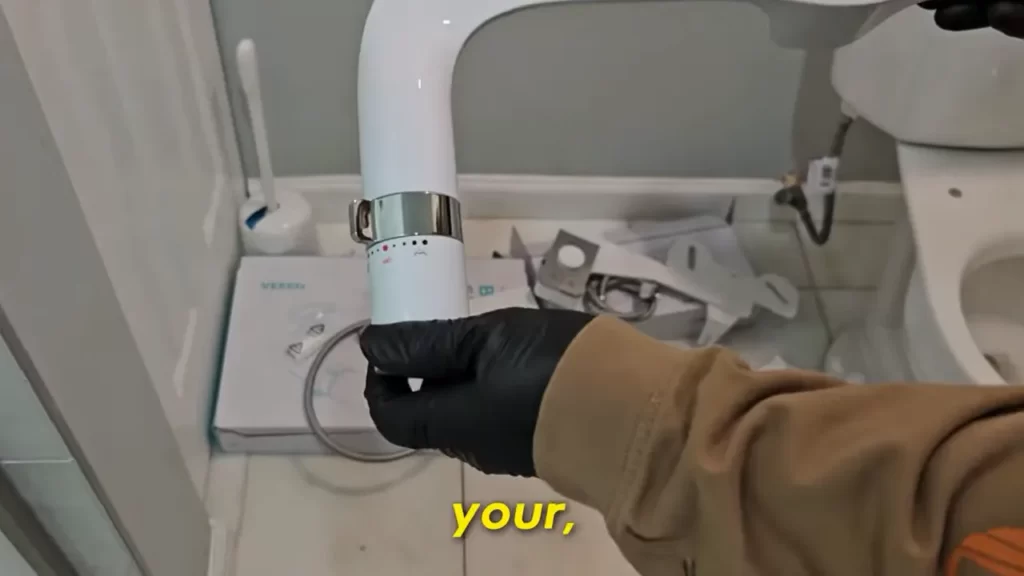
Preparing For Installation
Before installing a bidet without an outlet, there are a few essential steps you need to take to ensure a smooth and successful installation process. By following these steps, you can be confident in your ability to install a bidet without an outlet in no time.
Shut off water supply
To begin, the first thing you need to do is shut off the water supply to your toilet. Locate the shut-off valve usually positioned near the base of the toilet. Turn the valve in a clockwise direction until it is fully closed. This step prevents water from flowing out during the installation process, reducing the risk of messy accidents.
Drain water lines
After shutting off the water supply, it is crucial to drain the water lines to ensure a clean and dry installation. To do this, simply flush the toilet to remove any remaining water in the tank and bowl. After flushing, hold down the handle to expedite the draining process and to ensure there is no remaining water in the bowl. By emptying the water lines, you can work on the bidet installation without any water leakage issues.
Remove toilet seat
The next step is to remove the toilet seat to make way for the bidet installation. Using a wrench or screwdriver, locate the bolts securing the toilet seat to the toilet. Unscrew or unbolt these bolts, and gently lift the toilet seat away from the toilet. Set the seat aside in a safe location, ensuring you keep all the necessary components for reinstallation once the bidet is installed.
By following these crucial preparatory steps, you are now ready to proceed with the installation of your bidet without an outlet. With the water supply shut off, the water lines drained, and the toilet seat removed, you can confidently move forward and complete the installation process with ease.
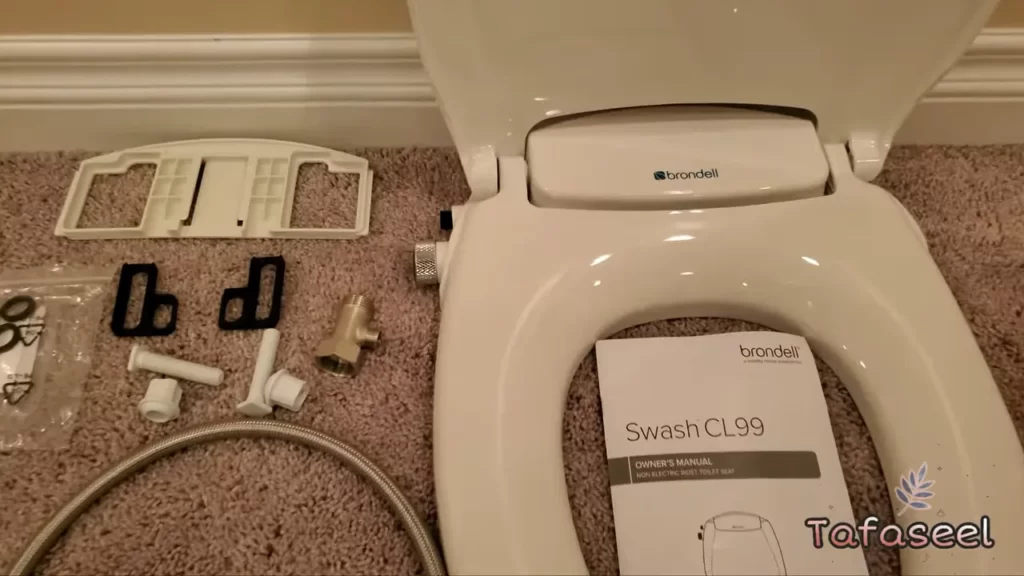
Installing The Bidet Attachment
Installing a bidet attachment can be a wonderful addition to your bathroom routine, providing you with a hygienic and refreshing way to clean up. Even if you don’t have an electrical outlet near your toilet, you can still enjoy the benefits of a bidet attachment. In this guide, we’ll walk you through the step-by-step process of installing a bidet attachment without an outlet.
Remove the toilet tank lid
The first step in installing a bidet attachment without an outlet is to remove the toilet tank lid. Carefully lift the lid off and place it in a safe location where it won’t get damaged.
Install t-connector to the toilet fill valve
Next, locate the toilet fill valve, which is typically on the left-hand side of the tank. Disconnect the water supply hose from the fill valve. Attach the t-connector to the fill valve, making sure it is securely fastened. This t-connector will serve as the connection point for both the toilet fill valve and the bidet attachment.
Connect the water supply hose to the t-connector
Once the t-connector is properly installed, take the water supply hose and connect it to the open end of the t-connector. Ensure that it is tightened securely to prevent any water leakage.
Install bidet attachment to the t-connector and toilet bowl
Finally, it’s time to attach the bidet to the t-connector and the toilet bowl. Position the bidet attachment onto the t-connector, lining up the holes on the attachment with the corresponding holes on the t-connector. Tighten the screws or bolts to secure the bidet attachment in place.
Next, position the bidet attachment onto the toilet bowl, aligning the nozzle with the desired angle for cleaning. Once in position, tighten the screws or bolts to securely attach the bidet to the toilet bowl.
Once everything is securely fastened, turn on the water supply and check for any potential leaks. Adjust the water pressure and temperature settings on the bidet attachment to your preference, and you’re ready to enjoy the benefits of a bidet without an outlet.
Installing a bidet attachment without an outlet may seem daunting, but by following these simple steps, you can easily add this hygienic and refreshing fixture to your bathroom routine. Enjoy the clean and refreshing experience of a bidet attachment in your home!
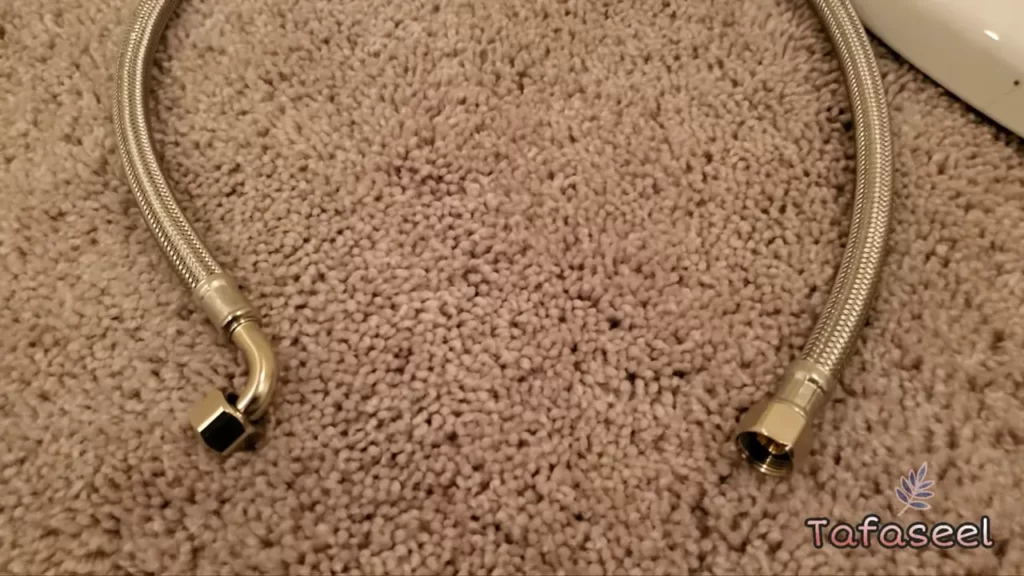
Adjusting Water Flow And Pressure
Adjusting Water Flow and Pressure
Having a bidet installed without an outlet is a convenient and eco-friendly solution for personal hygiene. Once you have successfully installed your bidet, the next step is to adjust the water flow and pressure to ensure a comfortable and efficient cleaning experience. In this section, we will discuss how to adjust the water flow valve, test the water pressure, and make any necessary adjustments.
Adjust the water flow valve
To begin, locate the water flow valve on your bidet. This valve controls the amount of water that is released during each use. Adjusting the water flow valve is essential to customize your bidet experience according to your preferences.
Here’s how you can adjust the water flow valve:
- Start by turning the valve clockwise to decrease the water flow. This will reduce the amount of water released, providing a gentler cleaning experience.
- Conversely, turning the valve counterclockwise will increase the water flow, allowing for a more intense and thorough cleaning.
- It is recommended to start with a lower water flow setting and gradually increase it until you find the desired water pressure.
Test the water pressure
After adjusting the water flow valve, it is crucial to test the water pressure before using your bidet. Testing the water pressure ensures that it is set at a comfortable level and avoids any potential discomfort or inconvenience during use.
To test the water pressure:
- Position yourself comfortably on the bidet and turn on the water. Allow the water to flow for a few seconds.
- Pay attention to the strength and force of the water. Is it too weak, making it difficult to clean effectively? Or is it too strong, causing discomfort?
- Adjust the water flow valve accordingly, either increasing or decreasing the water flow, until you find the optimal pressure that suits your needs.
Make any necessary adjustments
Once you have tested the water pressure and identified any issues, it is time to make the necessary adjustments.
- If the water flow is too weak, turn the water flow valve counterclockwise to increase the water pressure.
- On the other hand, if the water flow is too strong, turn the water flow valve clockwise to decrease the water pressure.
- Continue testing the water pressure after each adjustment until you find the perfect balance.
- Remember, it is important to listen to your body and make adjustments according to your comfort levels.
- If you are unsure about the optimal water pressure, start with a moderate setting, and gradually make small adjustments until you find your preferred level.
By adjusting the water flow valve and testing the water pressure, you can ensure a comfortable and satisfying bidet experience without the need for an outlet. Tailoring the water flow and pressure to your preferences not only enhances your personal hygiene routine but also contributes to water conservation efforts. Enjoy the benefits of a bidet and reap the rewards of a clean and eco-friendly alternative.
Additional Tips For A Successful Installation
When it comes to installing a bidet without an outlet, there are a few additional tips that can ensure a successful installation. These tips will help you to ensure that all connections are tight and secure, prevent leaks using Teflon tape, and follow the manufacturer’s instructions carefully.
Ensure all connections are tight and secure
To ensure a successful bidet installation, it is crucial to make sure that all connections are tight and secure. This will prevent any potential leaks or water damage in the future. Before starting the installation process, inspect all the necessary connections, including the water supply, bidet seat, and any additional attachments. Make sure that all fittings are firmly tightened, using an adjustable wrench if necessary. By ensuring that all connections are tight and secure, you can have peace of mind knowing that your bidet will function properly and efficiently.
Use Teflon tape to prevent leaks
One effective way to prevent leaks during a bidet installation is by using Teflon tape. Teflon tape, also known as plumber’s tape, is a thin white tape that can be wrapped around the threaded connections to create a tight seal. To apply Teflon tape, simply start at the end of the threads and wrap it around in a clockwise direction. Ensure that the threads are completely covered. This tape acts as a barrier, preventing any water from leaking out of the connections. By using Teflon tape, you can minimize the risk of leaks and ensure a watertight seal for your bidet installation.
Follow manufacturer instructions carefully
When installing a bidet without an outlet, it is essential to carefully follow the manufacturer’s instructions. Every bidet model may have specific installation requirements and steps that need to be followed. By reading and understanding the instructions provided by the manufacturer, you can ensure that the installation is done correctly, avoiding any potential issues or complications later on. The instructions may include specific guidelines for mounting, electrical connections, or any additional features of the bidet. By adhering to the manufacturer’s instructions, you can ensure a successful installation and the optimal functioning of your bidet.
Troubleshooting Common Issues
While installing a bidet without an outlet is a convenient option, it can occasionally come with its fair share of challenges. From leaks around connections to low water pressure and difficulty adjusting water flow, these common issues can affect the functionality of your bidet. In this section, we will discuss some troubleshooting tips to help you resolve these problems.
Leaks around connections
One common issue you might encounter during the installation process is leaks around the connections of your bidet. These leaks can lead to water wastage and potential damage to your bathroom fixtures. To address this problem, follow these steps:
- Check the tightness of each connection, including the water supply line, bidet hose, and bidet attachment. Make sure they are securely fastened.
- Inspect the rubber washers or O-rings in each connection. If they appear worn out or damaged, replace them with new ones.
- Apply plumber’s tape to the threaded ends of the connections. This will help create a watertight seal.
- Turn on the water supply and monitor the connections for any signs of leaks. If you notice any leaks, tighten the connections further or replace any faulty components.
Low water pressure
Another common issue you may face when installing a bidet without an outlet is low water pressure. Insufficient water pressure can result in ineffective cleaning and reduced comfort. To boost the water pressure, consider the following troubleshooting tips:
- Check the water supply valve leading to your bidet. Ensure it is fully open to allow maximum water flow.
- Inspect the bidet nozzle for any clogs or debris. Clean the nozzle thoroughly to remove any obstructions that might be restricting water flow.
- If your bidet has adjustable water pressure settings, increase the water pressure gradually until you achieve the desired level.
- If the low water pressure persists, consider installing a water pressure booster pump or contacting a professional plumber for assistance.
Difficulty adjusting water flow
Adjusting the water flow on your bidet is crucial to ensure optimal comfort and cleaning. However, you may encounter difficulties in fine-tuning the water flow. Here are some troubleshooting tips to help you resolve this issue:
- Refer to the instruction manual provided with your bidet. It will guide you on the specific steps to adjust the water flow.
- Try turning the water flow adjustment knob clockwise or counterclockwise, depending on your bidet’s design. Start with small adjustments and test the water flow after each change.
- If the adjustment knob doesn’t seem to have any effect on the water flow, make sure there are no clogs or debris obstructing the flow path.
- Consider contacting the bidet manufacturer’s customer support for assistance if you are unable to adjust the water flow successfully.
By following these troubleshooting tips, you can overcome common issues encountered when installing a bidet without an outlet. It’s important to ensure proper functionality and enjoy the benefits of a bidet in your bathroom.
Frequently Asked Questions
Can I Install A Bidet Without Outlet?
Yes, you can install a bidet without an outlet. Non-electric bidets that rely on water pressure don’t need an electrical connection. They are easy to install and eco-friendly alternatives to traditional bidets. Just ensure you have a water source nearby and follow the manufacturer’s instructions for installation.
What Happens If You Don’T Have An Outlet For A Bidet?
Without an outlet, a bidet won’t function properly. To use a bidet, you need access to water and electricity, so make sure you have the necessary infrastructure in place.
Where Do You Put An Electric Outlet For A Bidet?
Place the electric outlet near the bidet for easy access. Make sure it’s within reach but safely away from water sources.
Are There Bidets That Don’T Require Plumbing?
Yes, there are bidets available that don’t require plumbing. These bidets are often referred to as non-electric bidets or portable bidets. They utilize alternative methods such as water bottles or reservoirs to provide the cleansing function, making them suitable for homes without plumbing access.
Conclusion
Installing a bidet without an outlet is a convenient option for those seeking a hygienic bathroom experience. By following the step-by-step instructions provided in this blog post, you can successfully install a bidet without the need for an outlet. From preparing the necessary tools and materials to connecting the bidet to the water supply, this guide has equipped you with the knowledge to accomplish the task.
Start enjoying the benefits of a bidet in your bathroom today!
